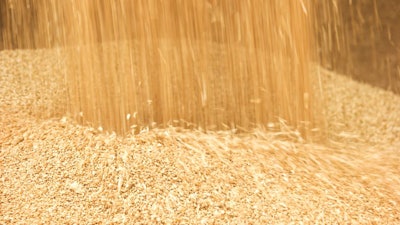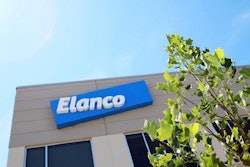
Experts offer insights on the potential policy changes a new administration might bring to the feed and grain industry
PODCAST: What could Biden’s policies mean for agriculture? (13:53)
Ann Reus, Feed Strategy staff reporter: Hello, and welcome to the NewsFeed podcast. I’m Feed Strategy staff reporter Ann Reus.
Well, we’re still in the early days of this new administration in the White House: President Joe Biden’s cabinet nominees are moving through Senate confirmation and, during his first two weeks in office, the president has signed at least 25 executive orders on many issues, including climate change, immigration, the health and safety of essential workers, and his push to “Buy American.”
At the time of this recording, four of Biden’s cabinet nominees have been confirmed, and two others, including Pete Buttigieg for secretary of transportation, were awaiting votes on their confirmations. A hearing was scheduled for Tom Vilsack, the nominee for secretary of agriculture, who also served in that position during the Obama administration. Others are still awaiting their confirmation hearings, including those important to agriculture, such as Gina Raimondo for secretary of commerce, Marty Walsh for secretary of labor, Katherine Tai for U.S. Trade Representative, and Michael Regan for administrator of the Environmental Protection Agency.
So, how will the Biden administration and its policies shape the future of the feed and grain industry? A recent Feed Strategy webinar addressed just that topic. We invited Constance Cullman, president and CEO of the American Feed Industry Association, and Ben Brown, assistant professor of agricultural risk management at the University of Missouri, to discuss these topics.
During that webinar, titled “How the Biden administration will shape the future of the feed and grain industry” which you can access on demand at feedstrategy.com/webinars, I had a conversation with Constance and Ben, covering a range of issues, including global trade, U.S. farm economy, and what’s behind the rising cost of soybean meal.
Here’s a listen to that conversation:
Reus: Constance, I’ll start with you. You mentioned that U.S. agriculture needs to become more resilient in the future. So, what actions can the agriculture industry do to achieve this?
Cullman: Yeah, I think there’s several different things. And when I talk about resiliency, I talk about the ability to adapt to changing global situations and structure, as well as some of the challenges we’ve seen. So, we take a look at COVID: It clearly demonstrated the need to have more resilient supply chains. I mean, at the onset of the pandemic, we were really stuck, because things were happening in China and, taking the feed industry as an example, a lot of our minerals and vitamins come exclusively from China. So that really was a bit of a concern. Now, fortunately, we overcame that pretty quickly. But it had the potential to be a very big problem for us.
And then the second thing, when we talk about changing global situations and marketplaces, is we do see some attempt to move to from globalization to more regionalization. Where we take a look at, remember, during the Cold War, the world was divided into the East and the West – Russia and the U.S. as the leaders for that. I could very clearly see, and you can see moves by China, to carve out part of the world that is more economically tied to China, for their prosperity. So, we began to see, West versus China as a separation of the of the globe and these different markets, we’re going to have to look and see how we can adapt to that, and be able to position ourselves for success economically.
Reus: Thank you. Ben, something you didn’t really touch on too much, but I know is affecting a lot of our audience: What is the cause of the rising cost of soybean meal?
Brown: Oh, excellent question. And I’d actually love to spend a lot of time – I mean, I could spend the whole hour – talking about soybean meal. It’s something that I think we’ve got both a domestic and international debate, if you want to call it debate, or war, maybe, over soybean meal. We – part of the domestic issue is that soybean meal has become a staple in feed rations. And of course, a lot of folks use least-cost rations when they’re when they’re setting their feed budgets. But the decrease in ethanol has decreased the production of dried distillers grains. Again, that’s COVID related, not policy related, that pushed the price of dried distillers grains up and we saw emphasis on towards soybean meal. Plus, we’ve seen some logistical issues and getting cottonseed in some areas. So, soybean meal domestically is a hot market. And we we’ve seen soybean crush into meal and oil kind of respond to that to meet the need.
Internationally, some of our competitors in meal products, protein meal products like sunflower meal, canola meal, a lot of those come from places around the globe that suffered really bad 2020 production years. Ukraine and that Black Sea region had their driest summer, in about 35, 36 years, lowered our production of that, while spurring demand, international demand in soybean meal. Think about China, for instance, they impressively built back their hog population, but they’ve also taken food scraps or food waste out of their rations as a source of food for pigs. And that is really spurring demand for soybean meal as well.
So the reason I started this off with, I think we’ve got an interesting war in soybean meal is, we need it domestically, but the world is also demanding it. And, so, when you get this competition for soybean meal, it tends to increase prices and the meal is going to go to whoever is willing to pay it most, right? Pay the most for it. And so, for a couple months now, I’ve been talking about soybean meal is an exciting market if you’re if you’re producing soybeans. Now, if you’re buying soybean meals, it’s probably not that exciting of a market, you’re probably a little sad. But we’ve got some real demand fundamentals that are really driving that soybean price.
Cullman: Yeah, Ann, and I was going to ask Ben a little bit: One of the other things that we’re definitely seeing on soybean meal is a lot of pressure from the EU buyers to go away from Brazilian soybean meal because of deforestation and sustainability issues, which makes, of course our soybean meal in the U.S. more attractive. But I just kind of wanted to point that out, that even just taking some of the market, production kinds of things out of it, we also have a bit of that push on sustainability and the impact that can have as well.
Brown: Yeah, excellent point. I’ll even throw in labor into this. Argentina represents about 42% of the world’s soybean meal supply. All of a sudden now we’ve got labor issues in South America where they can’t get people to work or load the boats. That’s putting a constraint on their ability to supply the world and people, our buyers, are returning to the United States, so several different factors, but soybean meal is an exciting market.
Reus: Well, speaking of global trade, we’ll talk about a couple different regions: Do you expect the U.S. to be able to negotiate a trade deal with the U.K.? And do you expect that the U.S. might re-engage in the TPP, or some other deal in the Asia-Pacific region?
Cullman: Ben, I’m going to grab this one first, and then I’d love to hear what your thoughts are. Because what I discovered during Ben’s presentation is, I pretty much agree with everything that Ben says. But I would, I would say on TPP, it’s going to be kind of interesting, because, remember, we have to be re-invited to come back to that. And I will tell you that there is some interest from China in trying to join that agreement. So it’s going to be very interesting to see how that plays out. But, whether we’ll be able to get back in, whether we’ll be invited to get back in and whether they’ll let us come back in at the same conditions and concessions that we had before we pulled out is a big question. I think there’ll be some conversations, but I’m not sure how quickly they’ll go anywhere.
On the U.K., I think that there’s definitely some concerns, quite frankly, the U.K. has to be in a position to negotiate the agreement. And the challenges they’ve had with Brexit has put them in an inability to really move aggressively on the trade agreement. So, some of it’s going to be how quickly the by the Biden administration picks it up. I think there’s some interest in continuing, but I don’t see anything before TPA expires, and then there’ll be a question of how quickly we can get back into that agreement negotiating game.
Brown: I would agree with that. I think there’s also some other things that probably need to get settled in dispute measures with the European Union and the U.K. first, before we can start talking about a new agreement. And we’ll see how quickly those happen.
Reus: All right, Ben, back here at home, what USDA policy actions do you think could improve the economics and profitability for U.S. agriculture? We have a viewer who thinks maybe some of the ones you listed are likely to add costs and complexity to the ag industry.
Brown: Yep, exactly right. So, you add compliance and we know it increases costs, decreases our competitive advantage. I kind of sped through this a little quick, because I did a poor job of time management today. And that was my fault. One of the interesting things is the U.S. has showed an unwillingness in our markets to adjust to economic signals. You look at other countries around the globe, and when we have downturns in market effects, profitability of farms, we tend to see a decrease in production costs as a result of that.
In the United States, we have not seen that. Looking just at land costs, land costs here in the United States have not decreased for agriculture. They kind of did in 2016, but they have not decreased over the last 25 years. And I showed you that graph of farm income with and without government payments: Our largest deficits between revenue and cost came in the early 2000s. But, thanks to government payments, we had positive years there as well. You go and look at the costs: Costs rose substantially those years. Now, the question I would have is, does the delivery of government assistance, whether that’s through standing farm bill programs or through these ad hoc programs, does that affect our ability to adjust cost of production? And I don’t have an answer for that. My gut says yes, ad hoc payments are more tied and put upward pressure on cost of production than traditional farm programs just due to the delay because they typically come a year after the fact.
But we need to spend a lot of time at that. My two recommendations are, we have to improve productivity and investment on research and development for genetics, new ways of production practices. I see that in the Biden administration’s policies, in terms of investing in precision ag and how we do that, so we can improve productivity and decrease our cost of production that way. The second way is to really focus on domestic demand. Now, we’re not going to have another ethanol boom, at least of that scale, I don’t think or at least I don’t see one. But I do think there’s room in, like, bioplastics and some of the other biodegradable products that create demand for agriculture goods, at least on the corn side, and there’s others for other crops – fiber and soybean oil for different things. So, I think you’ll see an emphasis in research and development on both sides, productivity and demand.
Cullman: And I would add just a couple of quick things: Infrastructure. Infrastructure has what has kept the U.S. agriculture competitive, even when sometimes the cost structure didn’t indicate that it should be. But our ability to move product has been unparalleled anywhere else in the world. But that’s changing. And, so, we need to see a reinvestment in our infrastructure. I think there are some opportunities for some value-added kinds of other income stream opportunities with some of the policies the Biden administration is putting forward. I don’t know that would have a significant impact on the bottom line at some of our more conventional market forces. But I think there’s some potential and some opportunities there.
And then I think the other big one is being able to position our products and our agriculture as a premium product. We are now moving into that stage, and we certainly have an excellent sustainability story to tell as far as quality of product. And if that becomes more important, sometimes than the lowest cost option, then then we have some potential there. But those are more long-run, long-term, kind of potential advantages, but I do think infrastructure, if we were to do one thing right away, that could have the fastest impact, it would be making sure our infrastructure is not vulnerable.
Reus: Yeah, and that kind of reinforces that idea that we have a great story to tell and we just need to be vocal and the industry needs to tell its story really well.
Well, thank you both. This has been really great.
If you would like to view the entire webinar, “How the Biden administration will shape the future of the feed and grain industry,” on demand, just go to feedstrategy.com/webinars and register to view the webinar recording. And while you’re there, check out our other upcoming and on-demand webinars.
Thanks for listening and have a great day.











